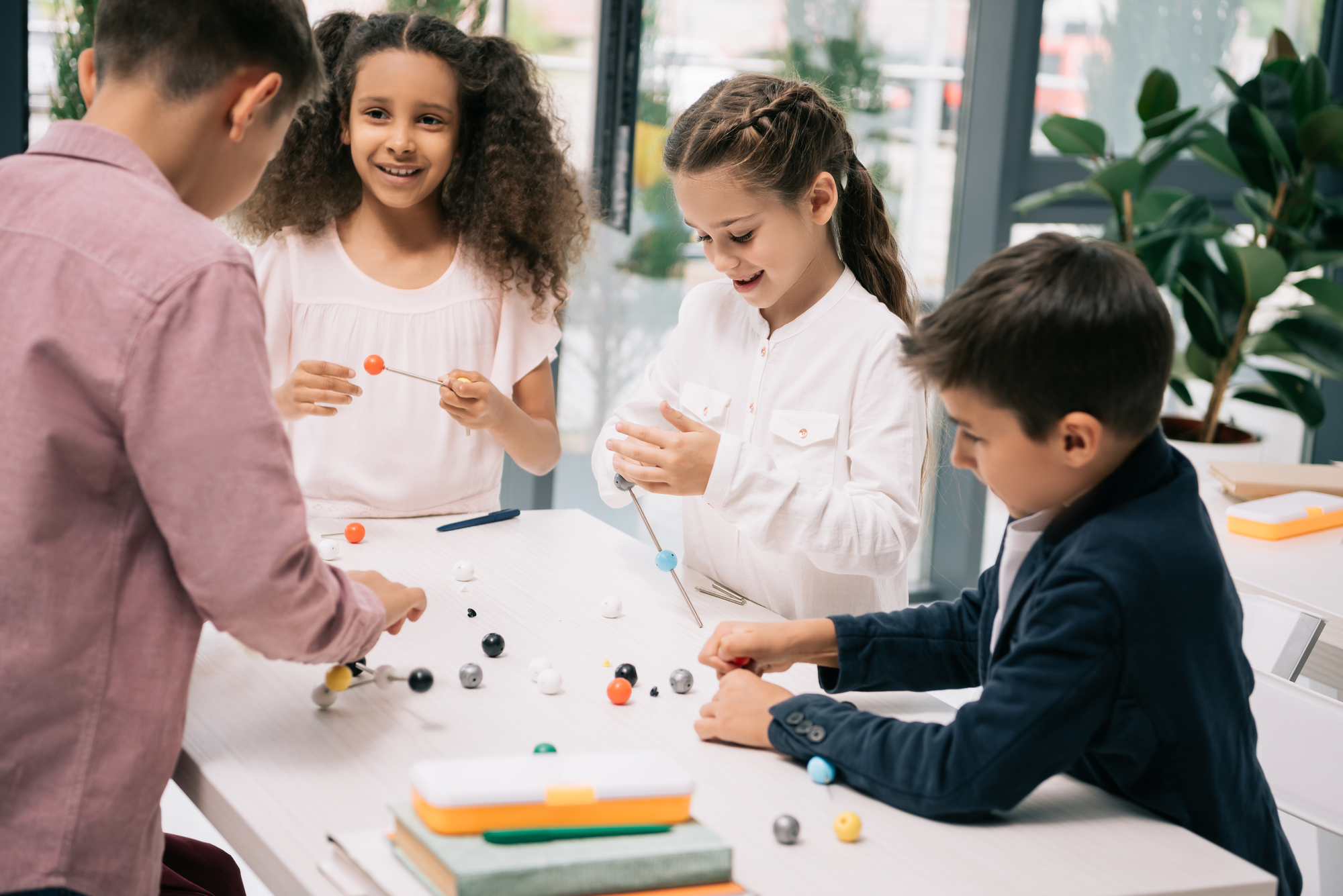Kelly Hollis, Global Head of Science at Education Perfect
“Why is the sky blue..?”
Science learning begins with curiosity. A 2017 survey conducted by UK child psychologist, Dr. Sam Wass found curious children would ask an average of 73 questions per day. Interestingly, this number peaks when a child is four years of age, but slowly declines after that.
So… how can we ensure that as our children learn they keep wanting to ask questions? And how we as parents can value and be supportive of their inquisitive natures in trying to figure out how the world works?
There are many ways a family can share the joy and critical thinking of discovering science at home and in our world. Learn and discover physics together as you kick a ball, seeing which one goes further and why. When cooking, talk about how the ingredients combine and what happens when heat is added. You don’t need to be ‘Dr. Google’, but parents can help build curiosity by asking children more probing questions, such as ‘What do you think is going to happen here?’, or even admit to an “I’m not sure, let’s look it up together and find out’. Intentional, mindful interactions with our children often extends their learning.
In recent years, the increased access to the internet on our mobile phones has seen a change in the way we look for information. According to a 2020 report published by the Australian Communications and Media Authority, 57% of children between the ages of 6 and 13 accessed the internet from a mobile device they owned, with a further 28% of children accessing the internet from a device that belonged to someone else. However, the reality is that the internet can bring up all sorts of information – both right and wrong.
For it to be helpful and factual, there needs to be a process of curation, sifting through it to find what we are looking for. Depending on your search term or topic, clicking through the endless links could lead you down a rabbit hole of misinformation. So it’s important to help your child understand how to evaluate and analyse the information they have found online, and how they can assess its accuracy – even just looking at the source of information is a good place to start.
Alongside this, social media platforms like Instagram and Twitter allow people to spotlight their beliefs, whether they’re factually or scientifically accurate or not – muddying the waters and making it difficult for those trying to find the most relevant, and reliable information to support their own informed judgement. Young people are most at risk as they are easily influenced by celebrities and are the most prolific users of these social media platforms. Unfiltered access can be detrimental to their ability to think critically and analyse the validity of the information they’re seeing.
Observations and questions are the best ways to create and instil a sense of discovery – key to continued scientific learning. As we have seen in the last 18 months, the internet and social media have influenced people on vitally important topics to do with the COVID-19 pandemic. There are millions of entries that address many different perspectives of the disease, with the World Health Organisation having worked tirelessly to provide information that comes from a scientific perspective. They are, however, not the resource many often go to for information on the topic.
It is important to always take the opportunity to ask our children questions about how they are perceiving the world around them. Rather than simply ask, ‘What did you do today? Think of questions you can ask that really establish what they are thinking about. What sorts of information did they come across in their day? Was the information entertaining, informative, or biased in any way? Did they agree with everything they read? Spend time watching the news together or scrolling through a social media timeline and ask them questions about what they are seeing. Know where they get their information, and know how you can support them to navigate what’s accurate and what’s ‘fake news’.
Continue to encourage your children to share their perspectives and observations about the world around them – you might even learn a thing or two.
And if you are still wondering why the sky is blue, here is a credible source of information. https://spaceplace.nasa.gov/blue-sky/en/
Kelly Hollis was a passionate high school teacher for 13 years before joining Education Perfect. She is now the Head of Science at Education Perfect, the preferred online platform providing curriculum-aligned Science content to all Year 7 to 10 students in government schools across the state of Victoria. In a partnership with the Department of Education, teachers and students have access to over 1,500 curriculum-aligned resources that can be used in a variety of ways. Scaffolded science lessons that provide automatic feedback help students to understand the content while the robust assessment platform allows teachers to gather a wealth of data on student performance.









